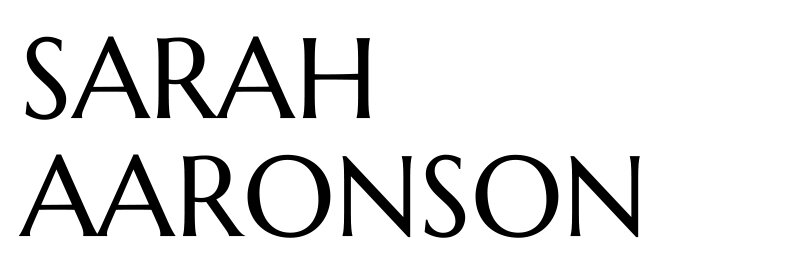FEMMES ET SINGES
Print referenced in collage Femmes et Singes • 1952 • Henri Matisse | Photograph referenced in collage courtesy of CATWALK Vivienne Westwood : The Complete Collections by Alexander Fury | Collage by Sarah Aaronson
How Vivienne Westwood found inspiration in Henri Matisse’s 1952 gouache on paper Femmes et Singes or ‘Women and Monkeys’… The iconic cut-out originally hung above the French doors in the dining room, otherwise known as ‘The Swimming Pool,’ of his Hôtel Régina studio in Nice. Previous to this period, Matisse’s work caused a scandal at the Salon d’Automne in 1905 as viewers and critics alike were shocked by his use of bright, non-naturalistic colors in his landscapes and portraits. Ever evolving, “during the last decade of his life Henri Matisse deployed two simple materials—white paper and gouache—to create works of wide-ranging color and complexity. An unorthodox implement, a pair of scissors, was the tool Matisse used to transform paint and paper into a world of plants, animals, figures, and shapes…” wrote MOMA. So perhaps it was no coincidence that Westwood referenced one of the preeminent ‘fauves’ (wild beasts), hence Fauvism, in her second formal Worlds End catwalk show entitled ‘Savage.’ Hardly a stranger to cutting scissors herself, the first variation of the Matisse inspired toga dress debuted on the runway for her Spring 1982 collection… Self described as ‘construction by means of color, Matisse’s masterpiece, constructed on long flat paper, was perfectly transformed onto the elongated draping train of Westwood’s own brilliant canvas of fabric…
Femmes et Singes (Women and Monkeys) • Original Cut-Out Circa 1952 • Henri Matisse
“For this collection, alongside her interest in historical dress, Vivienne Westwood often examined the attire of other countries - flat cutting drawn from Japanese costume, and details appropriated from the clothing of African tribes and South American cultures. ‘In taking from other civilizations I’m just doing what Picasso did in his painting Demoiselles d’Avignon,’ Westwood said. ‘He decided that the tradition of the human figure had finally lost its power and that he had to look to emblems of savagery to give it a future…’ In ‘Savage’ - as the name suggested - shapes were intentionally rough, even crude… Patterns were drawn from Native American and African tribal imagery, alongside modern art by Matisse and Picasso, whose inspirational roots were found in those non - Western societies…” wrote Alexander Fury in his book Vivienne Westwood: The Complete Collections.
Runway model for the Savage show • London • October 1981 • Image courtesy of Vivienne Westwood by Claire Wilcox
Installation view of the exhibition Henri Matisse : A Retrospective featuring Femmes et Singes above the door frame • 1992 - 1993 • Mali Olatunji • Image courtesy of The Museum of Modern Art Archives, New York City
The Swimming Pool in Matisse’s dining room at the Hôtel Régina, Nice (Femmes et Singes can be seen hanging above the door frame) • 1953 • Hélène Adant • Image courtesy of MoMA’s exhibition catalogue for HENRI MATISSE : The Cut-Outs
Detail of Worlds End Toga Dress featuring Matisse’s Femmes et Singes • Spring / Summer 1982 Savage Collection • Vivienne Westwood & Malcolm McLaren • Image courtesy of Kerry Taylor Auctions
Worlds End Toga Dress featuring Matisse’s Femmes et Singes • Spring / Summer 1982 Savage Collection • Vivienne Westwood & Malcolm McLaren
Installation view of the exhibition HENRI MATISSE : The Cut-Outs featuring Femmes et Singes above the door frame • 2014 - 2015 • Museum of Modern Art, New York City
The Swimming Pool in Matisse’s dining room at the Hôtel Régina, Nice (Femmes et Singes can be seen hanging above the door frame) • 1952 • Lydia Delectorskaya • Image courtesy of MoMA’s exhibition catalogue for HENRI MATISSE : The Cut-Outs
Femmes et Singes (Women and Monkeys) • 1952 • Henri Matisse • Image courtesy of MoMA’s exhibition catalogue for HENRI MATISSE : The Cut-Outs
Installation view of the exhibition HENRI MATISSE : The Cut-Outs featuring Femmes et Singes above the door frame • 2014 - 2015 • Jonathan Muzikar • Museum of Modern Art, New York City
Femmes et Singes (Women and Monkeys) • Original Cut-Out Circa 1952 • Henri Matisse
Vivienne Westwood & Malcolm McLaren flanked by models in the Worlds End Boutique in Chelsea • London • Early 1980’s













